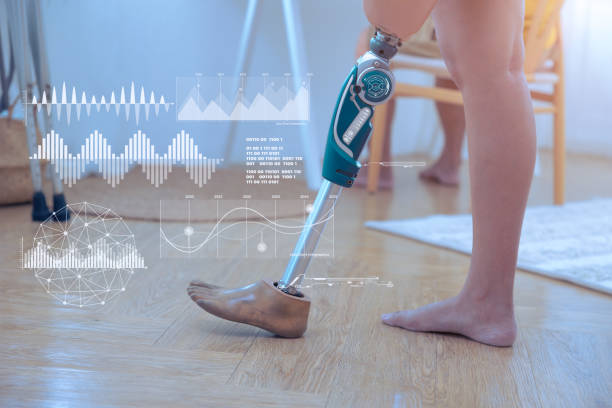
Robotic knee replacement has seen remarkable advancements in recent years, and it is at the forefront of current innovations within medical treatment. This is a minimally invasive procedure that is tailored for accuracy, quick recovery and patient comfort or allows surgeons a transition back to everyday activities. However, one of the most common questions patients have is, How long after a robotics knee replacement can they walk?. The answer depends on the overall health condition of the patient, their age, and the type of replacement they had
Knee replacement surgery is useful in providing relief and mobility to people who are suffering from severe joint pain and arthritis. The beginning of robotic technology has taken joint replacement, particularly knee surgery, to a new level of precision and effectiveness. Robotic-assisted knee replacement surgery is redefining how orthopaedic procedures are performed, with multiple benefits for patients and surgeons. This article will explore the advantages, process and the after effects of the procedure on walking.
Content:
Most people are encouraged to be on their feet on the same day the surgery takes place. As soon as the anaesthesia wears off and the signs of stability are visible. This action is attempted with the support of a walker or crutches. The goal at this point is not to take long walks but rather to begin moving and getting used to standing again in the normal position. Moreover, this initial step is undertaken by a physical therapist or a nurse to make the patient capable of covering enough distance. These initial steps are essential in reducing the risk of blood clots, stimulating blood flow and beginning to retrain muscles and nerves for supporting new joints.
One factor related to complications after robotic knee surgery is a sedentary lifestyle. After the surgery, the first walk can be difficult due to other factors, such as age and comorbidities, which may determine the inability to perform daily living activities. On the other hand, preoperative variables such as low functional status present in sedentary patients have been associated with prolonged length of stay, and patients who stay longer in the hospital have worse walking outcomes. However, a patient needs a lot of support at the start of their recovery through different sources, including assistive devices and technologies, which include wheelchairs, prostheses, hearing aids, visual aids and other hardware that support mobility, hearing, vision or communication capacities. In addition, pain and swelling are expected to be more in managing the symptoms, which means a patient must keep walking to not overstrain the new joint. However, professionals interpret these results as the need to continue exploring the relationship between exercise in patients before and after surgery.
After completing the second or third week, most of the patients notice a real difference in their ability to walk. While the use of assertive devices like walkers or canes is still in use, so patients can cover more distance. On the other hand, some of the patients can already cover more distance inside and outside of their house, so it depends on person to person how they handle their condition. However, till the second week of robotic knee surgery, the physical therapy exercises become a bit challenging but gradually make the patient’s condition more stable with confidence.
Around four to six weeks after surgery people are walking more freely and may no longer need a walker or any other assertive studies. This is the point when patients start to feel themselves all over again like walking up and down stairs of their house which later become a part of their routine. Moreover, some unusual changes are being noticed in the patient condition like stiffness or minor discomfort after the longer walks but overall knee functions gets stable. However, if a patient follow the physical therapy and their designed care plan then their mobility will be increased over time. In addition, most of the patients begin returning to light daily activities like grocery shopping, housework and driving at the sixth week of their recovery.
After completing a three-month recovery period, individuals can feel their walking ability more natural, such as they are more likely to walk long distances without any pain and continue to perform their daily routine activities like walking in parks, light hiking, or even dancing. However, an individual may still be continuing physical therapy particularly if they are trying to have a more active lifestyle. But for most people, daily mobility is nearly restored by reducing the swelling and making the knee feel strong and reliable with time.
It is important to understand that each patient heals as per their ability to tolerate pain. Several factors can influence the ability of an individual to walk again after robotic knee surgery. Moreover, people who have good and healthy conditions will recover more quickly and smoothly, but if an individual has underlying conditions such as diabetes, heart disease and obesity, it may take more time to regain full mobility. However, age can also play a significant role in recovery through consistent therapy and support.
In addition, the type of surgery also matters, such as if a patient had a partial knee replacement surgery, then their recovery might be faster because less tissue was affected. Some patients with partial replacements can walk independently within a week or two in comparison to those who had a total knee replacement, who take a longer time to reach that point. If a patient’s pain is under control, then they are more willing to participate in physical therapy, which helps them with speedy recovery.
Robotic knee replacement surgery is revolutionising joint replacement, offering patients a quicker recovery and enhanced mobility so that most patients can start walking within a day or two after surgery and progressively regain full mobility with the help of physical therapy. However, doctors emphasise that selecting the appropriate surgeon and a hospital equipped with advanced technology can greatly impact the recovery journey.

This post has been authored and published by one of our premium contributors, who are experts in their fields. They bring high-quality, well-researched content that adds significant value to our platform.


